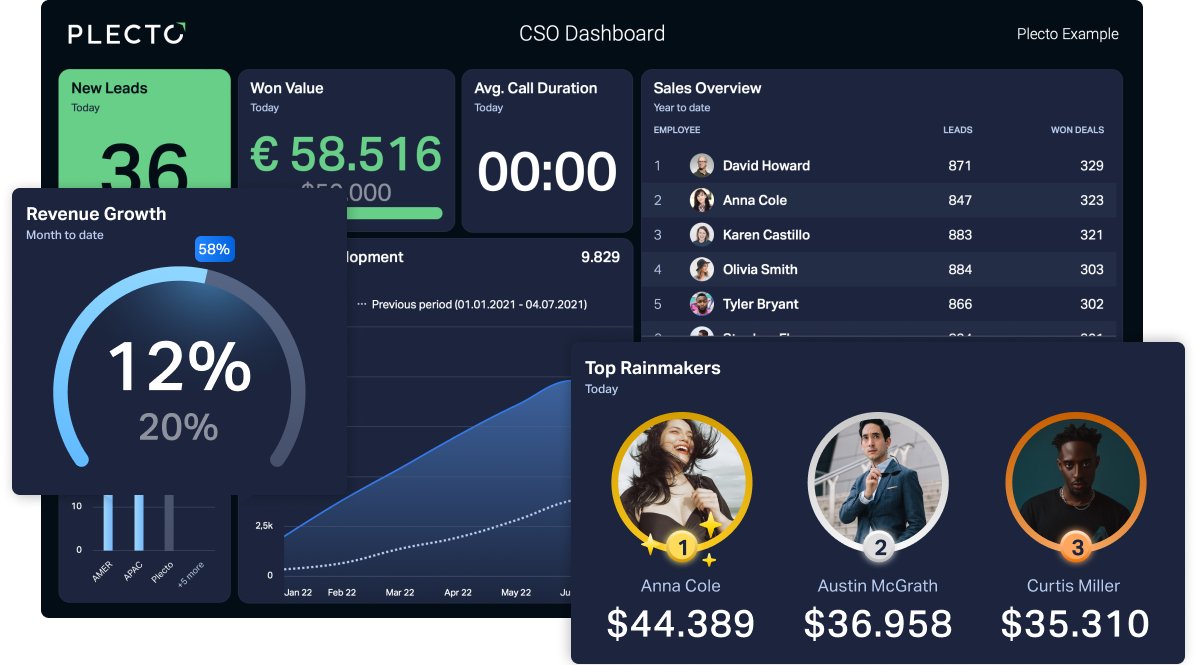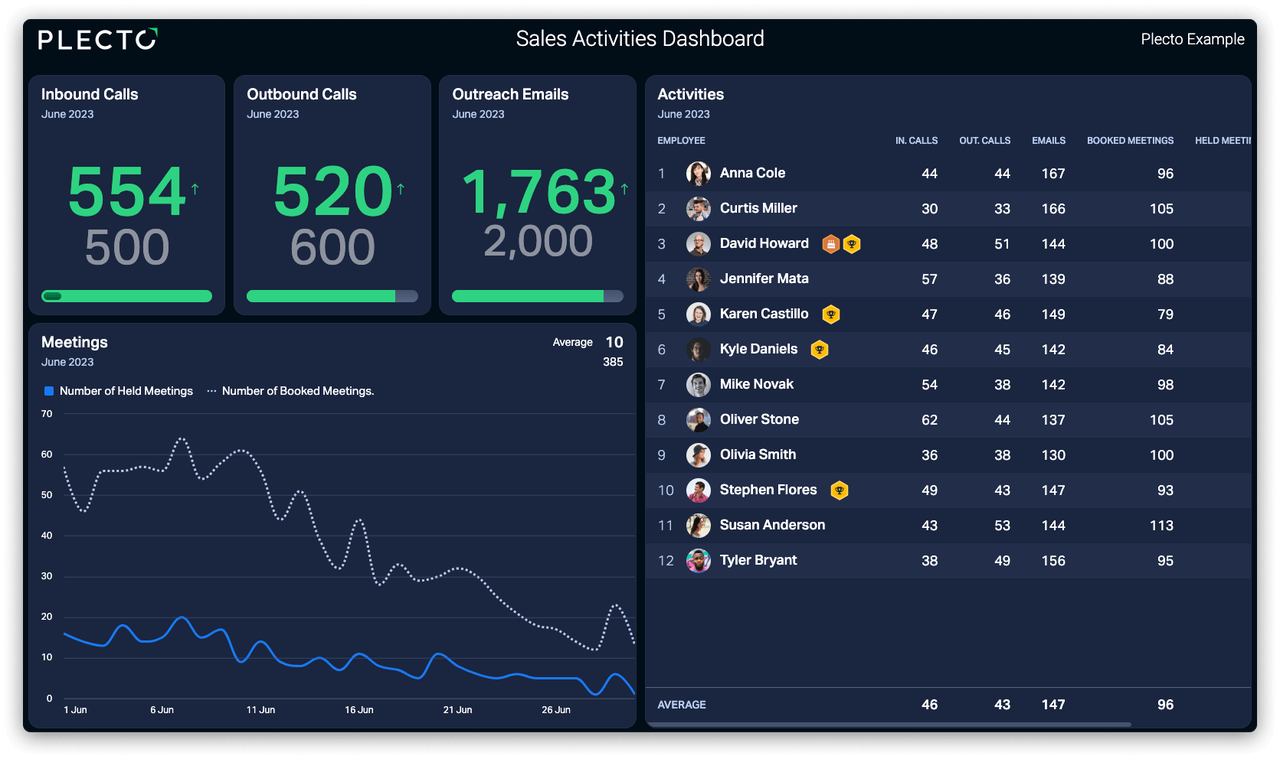Today’s business software solutions make it easier than ever to collect and analyze data, and many companies are using this technology to improve their sales processes.
Sales activity tracking encompasses a variety of data points that can be used to track overall sales performance and the performance of individual agents. It empowers sales leaders to make informed decisions based on data instead of relying on intuition and hoping for the best. Sales activity tracking is a powerful tool for streamlining workflows and maintaining a high-performing sales team, which is especially important in industries that rely on short sales cycles and high volumes.
4 Business-Critical Reasons to Implement Sales Activity Tracking
While successful sales organizations are often built on a foundation of perseverance, many sales leaders discover that pivoting to a more strategic data-informed approach catapults their team to even better and faster results.
Tracking sales activity can provide insights into which channels are most effective, where agents are working hard instead of smart, and which agents might benefit from coaching or training. It can also help sales leaders identify blind spots – previously hidden issues that are hindering the team’s best efforts, causing them to perform short of their potential.
Here are four important reasons to make sales activity tracking part of your modus operandi.
1. Data-Driven Decision-Making
With easy access to relevant data and insights, sales leaders are more empowered than ever to make the right business decisions – and secure buy-in from relevant stakeholders. Relying on anecdotal information, gut feelings, and educated guesses is no longer sufficient. Sales activity tracking enables you to base your decisions on concrete data, thereby improving your chances of success while providing a paper trail to validate your actions. By making informed choices, you’ll improve your chances of crafting effective strategies and processes that will lead your team to greater long-term success.
2. A Better Understanding of How Agents Spend Their Time
According to Forbes research, sales agents spend nearly two-thirds of their time on non-revenue-generating activities. Sales activity tracking enables managers to keep an eye on how their agents are spending their time. The goal isn’t to micromanage but to identify bottlenecks and inefficient processes that are hindering productivity. It’s also a way to audit your current sales strategy and identify which activities yield the best results, so you can nudge agents to focus on those high-value activities. Comparing the activities of top-selling agents against low-performers can provide useful insights that you can use in coaching and training.
3. Improved Forecasting
Accurate forecasting is shown to be a key success driver by enabling sales organizations to set realistic goals and allocate resources most effectively. Sales activity tracking provides the data needed to identify trends and patterns, and understand which sales activities are most effective. With a solid grasp of what’s happening along the path from prospect to customer, you’ll have a better vantage point from which to predict future results.
4. More Motivated & Successful Agents
Most sales organizations are quota and commission-based – so it’s not only management that wants to sell more, faster. Your agents also want to bring in revenue, and sales activity tracking can help them do that by highlighting the activities that bring the best return on effort. With data to advise them, agents are better positioned to engage in activities that will bring results – and as their close rates go up, so will their motivation!
Deciding Which Sales Activities to Track
The data you collect will make or break the success of this new foray into data-driven operations. A good rule of thumb is to track all sales activities related to a deal or opportunity. These usually include a combination of metrics related to phone calls, emails, social media interactions/messages, and follow-up activities. However, you might also want to consider areas for which you currently lack data. Starting up a sales activity tracking program is an opportune time to “right past wrongs” by shifting focus to things you might’ve been neglecting.
To get the most actionable insights, monitor outcomes as well as volume. While it’s important to know how agents are spending their time, it’s more important to understand the results of those efforts. When tracking phone calls, also track things like duration and outcome. For emails, you’ll want to look at open rates, click-throughs, and response rates. Looking into these types of outcomes will help identify underperforming channels as well as potential issues in your messaging or other aspects of your strategy. For follow-up activities, you’ll want to look into whether they’re timely and thorough.
3 Barriers to Sales Activity Tracking
For all of its benefits, sales activity tracking isn’t without challenges. Here are three stumbling blocks that sales leaders often encounter when implementing sales activity tracking for the first time.
1. Internal Pushback
Some of your agents will see this new initiative as an attempt to micromanage or “look over their shoulder.” If it’s going to require manual effort on their part, they might also see it as stealing time from sales-related tasks, making it more difficult to reach their quotas and earn commissions. Most agents will come around once they see value in the benefits mentioned above. In the meantime, it’s crucial to stress that the objective isn’t to check up on them but to help them sell more easily and effectively by identifying and sharpening the best tools in their arsenal.
2. Poor and Inconsistent Data Entry
Manual sales activity tracking is demotivating for agents and often has a low compliance rate, resulting in poor data quality and weak insights. Manual tracking almost always leads to some activities not being documented. However, automating as much of the tracking process as possible will mitigate this challenge and improve the integrity of your data. A system like Plecto can help you automate data collection across multiple systems and aggregate it into visually stunning and easy-to-understand reports with very little hands-on time (more on that later).
3. Data Fatigue
On the other end of the spectrum from low compliance, automated sales activity tracking can yield huge volumes of data that are difficult to mine. This often leads to people giving up because the process is just too arduous. To avoid data fatigue, limit your tracking to activities that directly align with deals and opportunities – and only track data that can deliver actionable insights with the potential to improve the outcomes of those activities.
Plecto is the Perfect Partner for Sales Activity Tracking
Undertaking sales activity tracking for the first time can seem daunting because manual tracking methods can be time-consuming, incomplete, and prone to error. Fortunately, there are better options.
Plecto integrates with most of the major CRM systems, saving hours of hands-on time while improving the integrity of the data you’ll come to rely on. The platform is fully customizable to give you complete control over which activities you measure, for which period, against which targets, and more – customize for any parameters you like.
Instead of spending time on busy work like constantly updating Excel and PowerPoint files, Plecto enables you to schedule and generate automatic reports using real-time data to help you track the activities that will propel your team toward their sales targets. In addition, Plecto’s interactive real-time dashboards make it easy to create personal and team-wide dashboards to keep your agents focused and motivated to complete high-value sales activities.
Regardless of how you choose to structure and share your data, Plecto’s drag-and-drop tools make it easy for people of any skill level to present data in a polished format that’s visually appealing and easy to understand.




